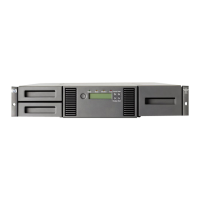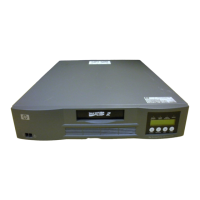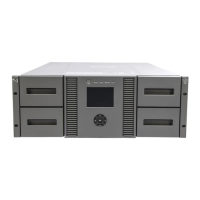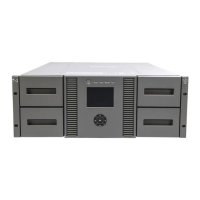Diagnostics and troubleshooting52
SCSI ID
Changed drive SCSI ID, but the
host server does not recognize
the new ID.
• Make sure that all SCSI devices on the same bus have unique
ID numbers.
• If the SCSI bus is narrow (50-pin) only SCSI IDs 0 through 7
are available.
• Make sure that you cycle power on the autoloader after
changing the SCSI ID.
• Reboot the host server.
Autoloader Performance
The autoloader is not efficiently
backing up data.
• Check the network bandwidth from the host computer. If you
are backing up data over a network, consider comparing to
a local-only backup.
• Make sure the autoloader and tape drive are on their own
SCSI bus and not daisy-chained to another tape drive or to
the hard drive being backed up.
• Make sure the autoloader is connected to a LVDS SCSI bus
and there are no SE devices on the same bus, because this
will cause the entire bus to negotiate down to SE speed.
• Use an Ultra320 SCSI bus and high-quality cabling with 1/8
Ultrium 960 Tape Autoloaders.
• Do not connect the autoloader to a narrow SCSI bus.
• Try a new cartridge. A marginal cartridge can cause
performance problems due to bad spots on the tape requiring
retries.
• Backing up data that compresses poorly or is already
compressed will lower performance.
• Check the size of the files. Small file size can impact
performance.
• Confirm that the backup application is utilizing block sizes of
at least 32KB, preferably 64KB. Refer to the backup
application documentation for details.
• Make sure the backup server has enough memory to handle
the bandwidth of the backup or restore.
• Clean the tape drive. See ”Cleaning the Tape Drive” on
page 43 for instructions.
Problem Solution

